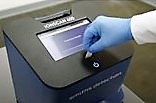05/08/2011
Money saving alarm response system streamlines emergency communication
Houston, Tx
As the fourth-largest 9-1-1 Public Safety Answering Points (PSAP) in the United States, HEC often is at the forefront in identifying innovative technological trends. To date, it is the largest public safety communication agency in the country and the first in the state of Texas to implement ASAP.
"As the first major metropolitan city in the nation to use ASAP, this will serve as another tool in our efforts to provide the best possible public safety services available for the citizens of Houston," said Cutler.
Earlier this year, two alarm companies responsible for monitoring 35,000 alarm systems in the city of Houston began transmitting alarm notifications directly to the HEC's CAD system. Cutler states that calls generated via ASAP are move accurate due to the reduction of miscommunication.
As more and more alarm monitoring stations begin processing alarm calls via ASAP, Cutler estimates that PSAPs will experience significant reductions in these types of calls traditionally handled by phone lines.
“Overall, this will result in more efficient call processing and greatly reduce costs for both the city of Houston and the alarm monitoring stations using the ASAP application. It will help curb the workload of our call takers and allow them to process emergency calls more efficiently,” says Cutler.
“Currently, the two pilot alarm monitoring stations using ASAP are creating about 10% of all police alarm call events in our CAD system. While a drop in telephone call volume by 8 to 13% is outstanding, a 10% reduction in the number of alarms requiring call-taker intervention is equally astonishing when you consider that we receive an average of more than 2,000 police alarms per week.” Bill Carrow, president of APCO International, says that APCO is very pleased with the progress shown with Houston coming on-board with this project. “By allowing the swift delivery of alarm data direct from the monitoring station to the PSAP, you not only accelerate the process, but you remove the chance for human error in mis-keying critical information, thus reducing possible loss of life and property,” says Carrow.
According to CSAA President Ed Bonifas, “The Houston implementation of ASAP is the new standard in fostering the public-private partnership between alarm monitoring companies and 9-1-1 PSAPs.”














